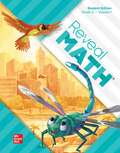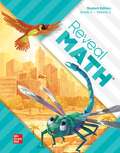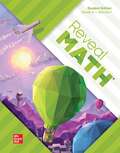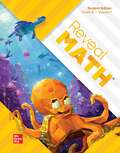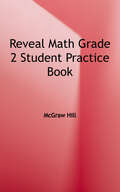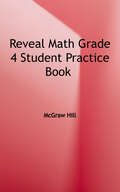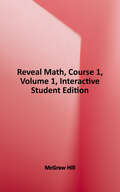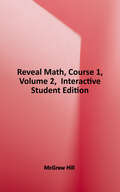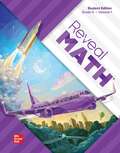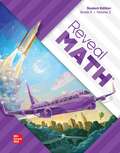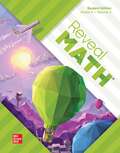- Table View
- List View
Reveal Math Student Edition Grade 2 Volume 1 (Reveal Math)
by McGraw-Hill EducationCultivate mathematical student agency, growth mindset, and collaboration with the write-in Student Edition. Each volume is full-color and perforated for ease of use. This is volume 1.
Reveal Math Student Edition Grade 2 Volume 2 (Reveal Math)
by McGraw-Hill EducationCultivate mathematical student agency, growth mindset, and collaboration with the write-in Student Edition. Each volume is full-color and perforated for ease of use. This is volume 2.
Reveal Math Student Edition Grade 4 Volume 1 (Reveal Math)
by McGraw-Hill EducationCultivate mathematical student agency, growth mindset, and collaboration with the write-in Student Edition. Each volume is full-color and perforated for ease of use. This is volume 1.
Reveal Math Student Edition: Grade K, Volume 1 (Reveal Math)
by McGraw-Hill EducationCultivate mathematical student agency, growth mindset, and collaboration with the write-in Student Edition. Each volume is full-color and perforated for ease of use. This is volume 1.
Reveal Math Student Practice Book Grade 2
by McGraw HillSupport your standards-based instruction with the easy-to-use, spiral-bound, full-color Teacher Edition. Comprehensive supports like the Effective Teaching Practices, item analysis, and guiding questions, are embedded within the instruction.
Reveal Math Student Practice Book Grade 4
by McGraw HillSupport your standards-based instruction with the easy-to-use, spiral-bound, full-color Teacher Edition. Comprehensive supports like the Effective Teaching Practices, item analysis, and guiding questions, are embedded within the instruction.
Reveal Math, Course 3, Volume 1
by McGraw HillLet students take ownership of their learning with volume 1 of 2 of this write-in text edition where concepts are taught from a research-based approach of mathematical instruction. <P><P> NIMAC-sourced textbook
Reveal Math, Course 3, Volume 2
by McGraw HillLet students take ownership of their learning with volume 2 of 2 of this write-in text edition where concepts are taught from a research-based approach of mathematical instruction. <P><P> NIMAC-sourced textbook
Reveal Math: Volume 1
by McGraw-Hill EducationCultivate mathematical student agency, growth mindset, and collaboration with the write-in Student Edition. Each volume is full-color and perforated for ease of use. This is volume 1.
Reveal Math: Volume 2
by McGraw-Hill EducationCultivate mathematical student agency, growth mindset, and collaboration with the write-in Student Edition. Each volume is full-color and perforated for ease of use. This is volume 2, Grade 5.
Reveal Math: Volume 2
by McGraw-Hill EducationCultivate mathematical student agency, growth mindset, and collaboration with the write-in Student Edition. Each volume is full-color and perforated for ease of use. This is volume 2, Grade 4.
Revealed Preference Theory
by Christopher P. Chambers Federico EcheniquePioneered by American economist Paul Samuelson, revealed preference theory is based on the idea that the preferences of consumers are revealed in their purchasing behavior. Researchers in this field have developed complex and sophisticated mathematical models to capture the preferences that are 'revealed' through consumer choice behavior. This study of consumer demand and behavior is closely tied up with econometrics (especially nonparametric econometrics), where testing the validity of different theoretical models is an important aspect of research. The theory of revealed preference has a very long and distinguished tradition in economics, but there was no systematic presentation of the theory until now. This book deals with basic questions in economic theory, such as the relation between theory and data, and studies the situations in which empirical observations are consistent or inconsistent with some of the best known theories in economics.
